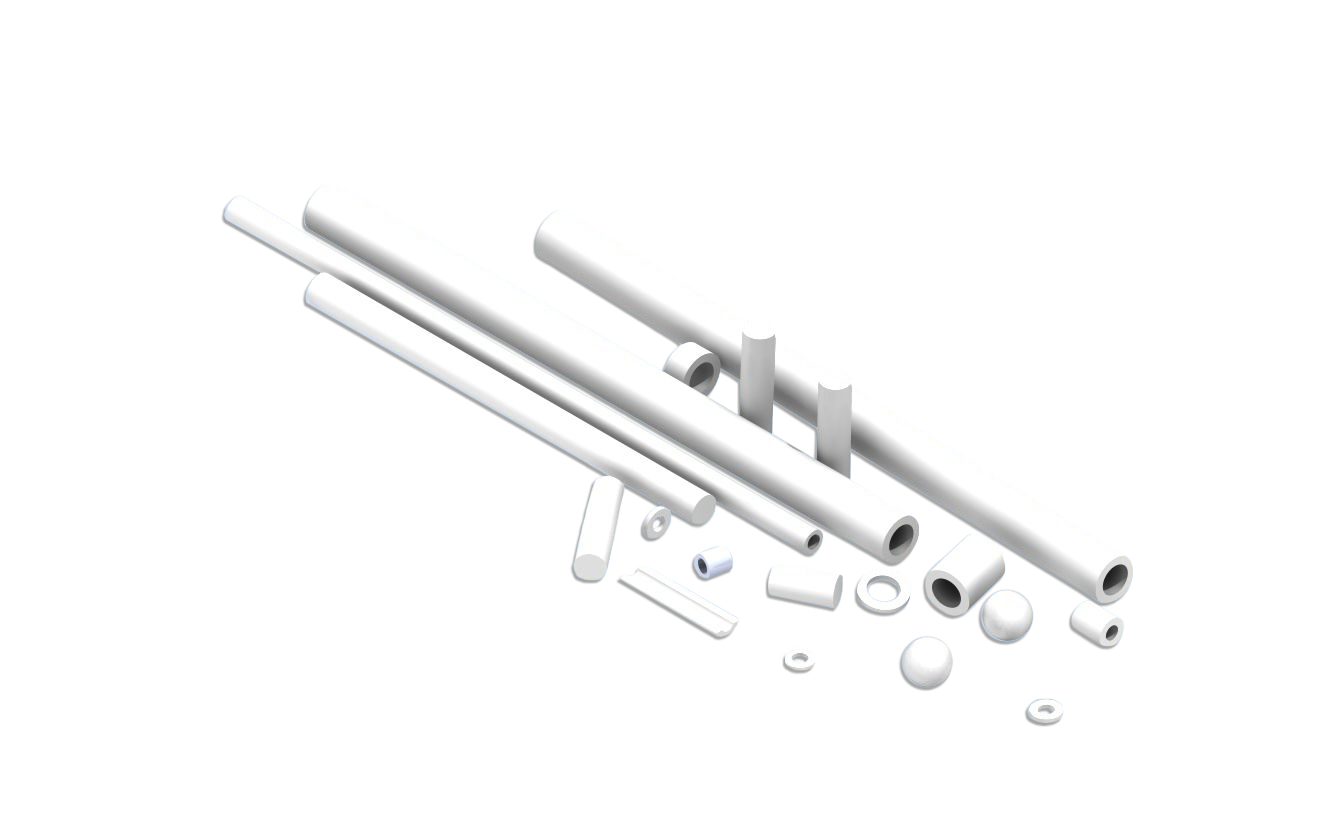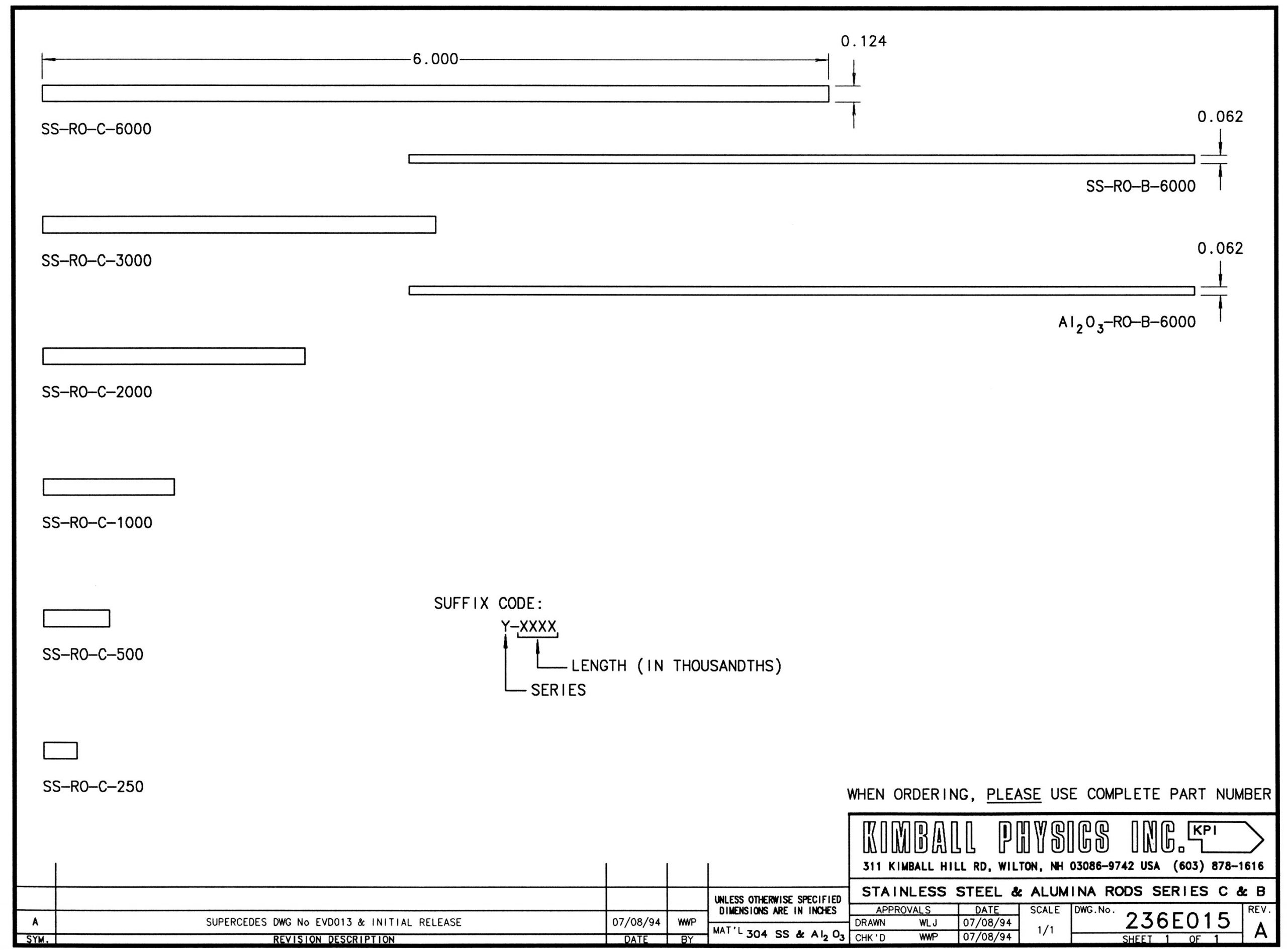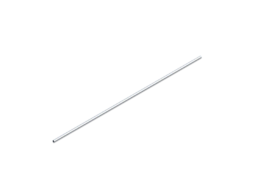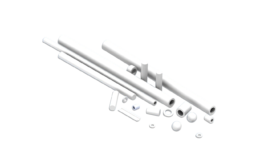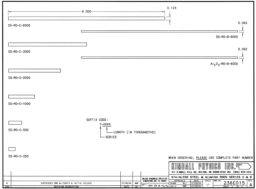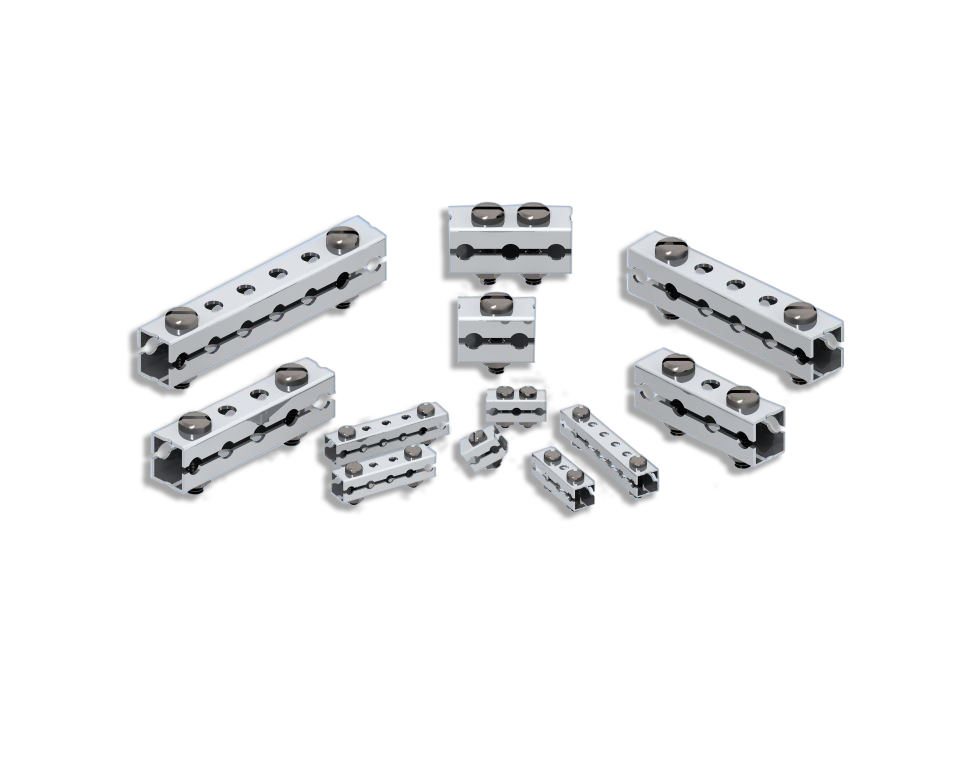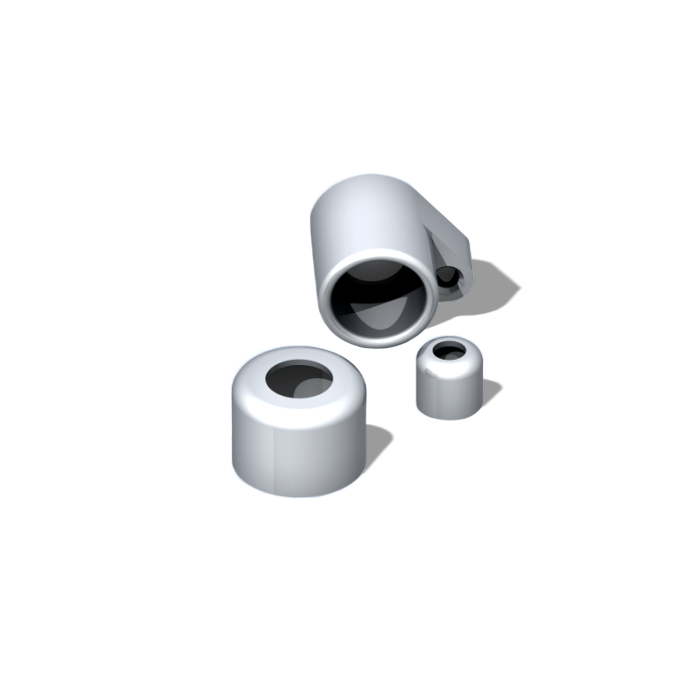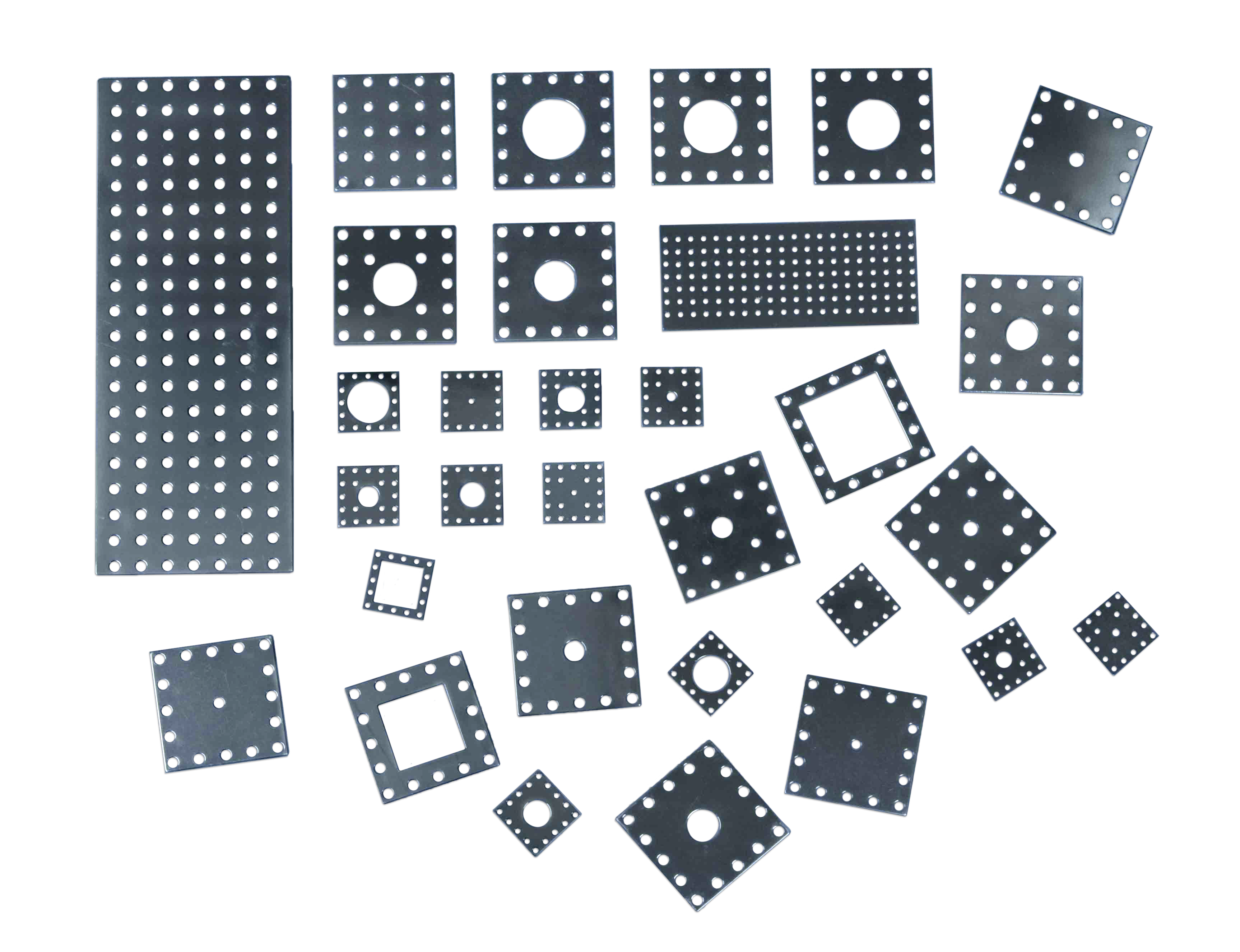Description
Product available:
Non-conductive elements used mostly for mounting electrically isolated structures. They can be connected to Screw Clamps.
B-Series Rod: 0.062″ dia.
See Print above. (Note: print contains stainless steel rods as well.) The third picture on the left shows a sampling of other Kimball Physics insulating eV Parts.
For threading parts a variety of lengths and sizes of ceramic rod (RO parts), along with alumina spacers (SP parts) of standard lengths of 0.5a, a, 1.5a, and 2a are available.
Several different methods may be used to secure the rod ends. One method utilizes horseshoe-shaped stainless steel lock rings (LR parts), which clamp onto any rod at any position desired without need of a groove.
An alternative method to secure the rod ends is to use screw clamps (SC parts). Some types can hold several rods at once. Screw clamps are non-magnetic and hold firmly even at temperatures up to 1000ºC; however, they are more bulky than the lock rings and the screws may freeze to the nuts after high temperature operation in UHV. Screw clamps may be used to fabricate very rugged filament mounts. They may be spotwelded to either plates or brackets. By use of an alumina spacer and a special screw, the two halves of the clamp may be insulated electrically from one another.
Another method of securing the rods, especially suited to small diameter rods, is to fuse the end of the rod into a small ball using a high temperature (greater than 2000ºC) torch. Normally this can only be done on one end of a rod: if both ends are fused, the structure cannot be disassembled later.
As a final means of securing rods, wirenuts (WN parts) have been made available. These wirenuts consist of closely wound coils which barely slip over the ceramic rods and have been given a kink to insure a bakeout proof friction fit. (The kink must be supplied by the user according to the amount of friction desired.) Wirenuts may be made from either stainless steel type 304 or from molybdenum, but since high temperature operation is often desired, the wirenuts normally furnished are molybdenum.

